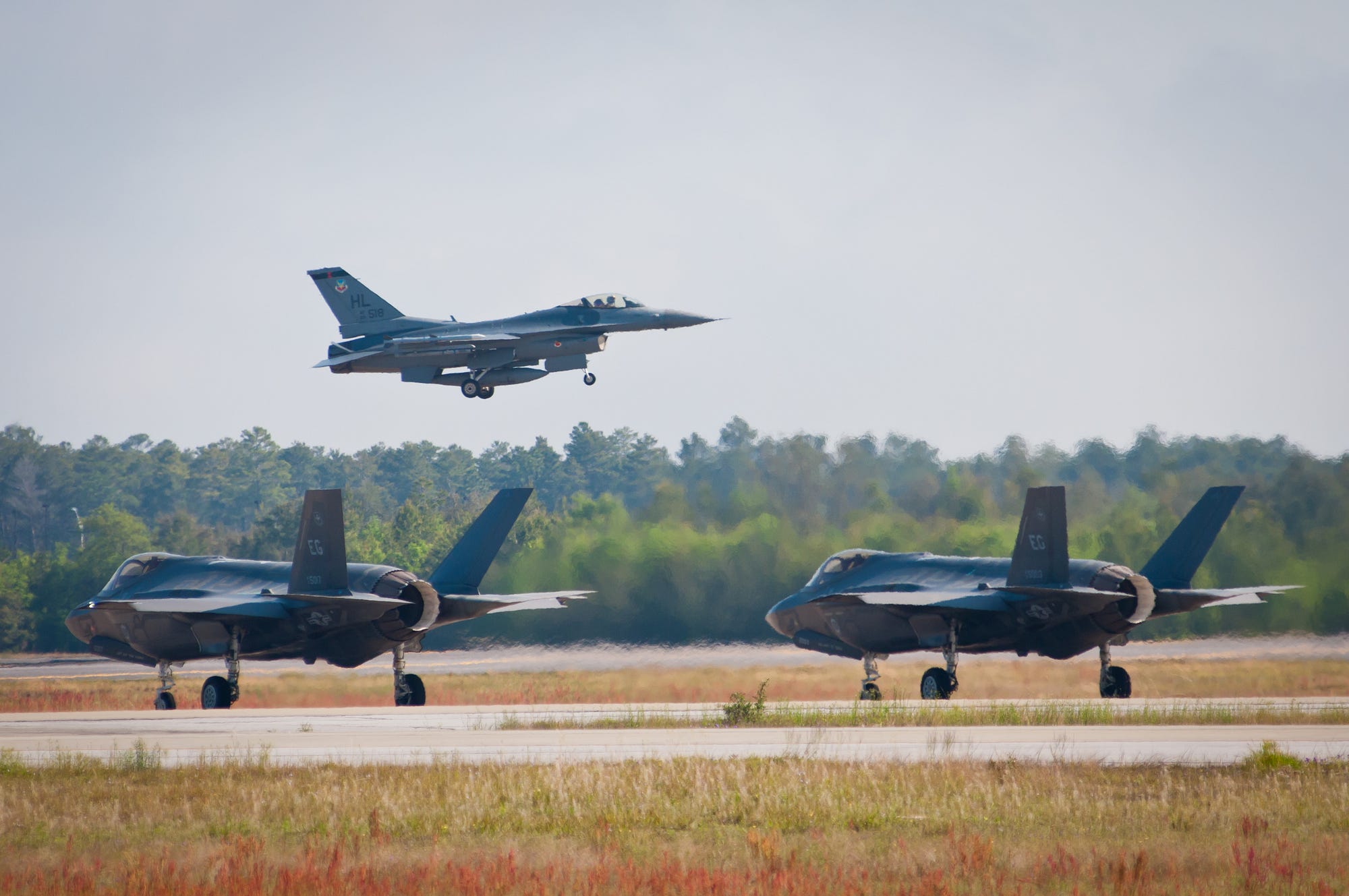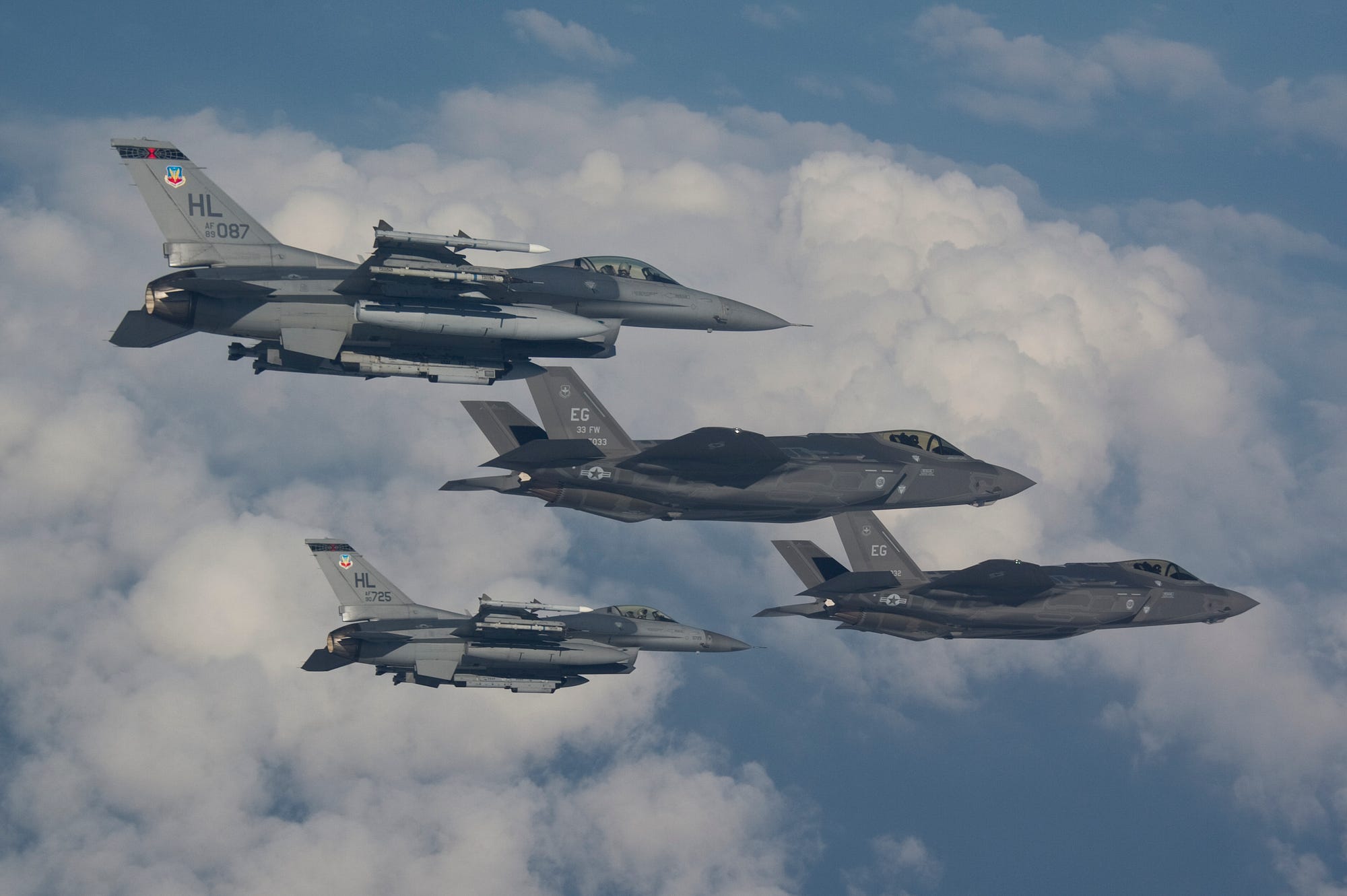JOSEPH TREVITHICK
 In January 2015, a single-seat F-35A Joint Strike Fighter fought a mock aerial battle with a considerably older, two-seat F-16D … and lost. That’s according to an unclassified test report that highlighted a number of serious and potentially deadly flaws in the basic design of the new, Lockheed Martin-made F-35.
In January 2015, a single-seat F-35A Joint Strike Fighter fought a mock aerial battle with a considerably older, two-seat F-16D … and lost. That’s according to an unclassified test report that highlighted a number of serious and potentially deadly flaws in the basic design of the new, Lockheed Martin-made F-35.
Lockheed’s public relations team fired back. The company insisted that the JSF will be just fine in combat — and it’s not really a close-in dogfighter, anyway.
“The media report on the F-35 and F-16 flight does not tell the entire story,” Lockheed stated in a July 1 press release. “The F-35’s technology is designed to engage, shoot and kill its enemy from long distances, not necessarily in visual ‘dogfighting’ situations.”
But what the Texas-based defense contractor — and the Pentagon — do notmention is that they have subtly shifted the goalposts for the F-35 as the stealthy fighter has failed to live up to expectations over the years. In contrast to current rhetoric, proponents once sold the JSF as a dogfighter.
In 1996, the Pentagon hired both Lockheed and Boeing to build advanced fighter jet prototypes. Five years later, Lockheed’s X-35 won out to become the basis for the Joint Strike Fighter for the U.S. Air Force, Navy and Marine Corps—what we today know as the F-35.
“The goals for the F-35 are lofty,” John Kent, a senior communications specialist with the Lockheed Martin Joint Strike Fighter Program, wrote in the Spring 2003 edition of the Air Force’s Air & Space Power Journal.
The plane would be “a single-pilot, survivable, first-day-of-the-war combat fighter with a precision, all-weather strike capability that uses a wide variety of air-to-surface and air-to-air weapons—and that defends itself in a dogfight.”
So while aerial dueling wasn’t the F-35’s main mission, the company still expected the Joint Strike Fighter to defeat opponents at close range. Kent also praised the JSF’s supposed “high maneuverability.”
But then the next year, the Pentagon’s top weapons-testing organization pointedly avoided mentioning air-to-air fighting while discussing the F-35 — and instead fixated on the plane’s ground-attack skills. “[The] JSF will be capable of striking and destroying a broad range of targets, day or night, in adverse weather conditions,” the Director, Operational Test and Evaluation claimed in its first-ever annual report on the program.
That didn’t mean that the Air Force—or the Navy or Marine Corps—had totally given up on ever sending the F-35 into close air battles. But the flying branch began downplaying the jet’s need to dogfight, perhaps acknowledging what testers were finding to be true — that the JSF couldn’t maneuver very well.
“The challenge, chivalry and thrill of ‘guns-only’ dogfighting is clearly of a bygone era,” Air Force Lt. Col. Pete Zuppas, then in charge of the 35th Operations Group in Japan, wrote in an official 2007 op-ed.
But Zuppas was quick to qualify his own statement. After all, there would probably come a time when the F-35 equipped most of the Air Force’s fighter squadrons. If the F-35 couldn’t dogfight, then the Air Force couldn’t dogfight.
“Who knows when we’ll need to do some of that fighter pilot stuff,” Zuppas added. “So at least for now … we’ll keep balancing our training to include a good dogfight now and then.”
So even as the Joint Strike Fighter’s official role across the services increasingly focused on attacking ground targets, the Air Force still alluded to — and tested — close-range air battles.
“Test maneuvers are being executed up to 50 [degrees] AoA,” an official JSF program press release stated in December 2012, referring to the exact same sort of high “angles of attack” that were involved in the January 2015 mock air battle.
Pilots need to be able to “aggressively maneuver the F-35A,” the statement explained.

To recap — as of 2003, the F-35 was supposed to be, in part, a dogfighter. By 2012 the Air Force was working hard to adjust that expectation. Two years later, the flying branch talked as though the JSF was never meant to get involved in close aerial fighting.
“An F-35 pilot who engages in a dogfight has probably made a mistake,” Air Force Gen. Mike Hostage, then chief of Air Combat Command, told Breaking Defense in June 2014. Air Combat Command owns most of the service’s fighter jets.
In the same interview, the general seemed to both dismiss the possibility of short-range battles and suggest they were an inevitable consequence of early victories. And if caught off guard, an F-35 pilot would still be able to maneuver as well as an F-16, Hostage added, seemingly undermining his own earlier point.
The Air Force took the same contradictory position in response to the newest test revelations. “The F-35 is designed to be comparable to current tactical fighters in terms of maneuverability, but the design is optimized for stealth,” Maj. Gen. Jeffrey Harrigian, director of the Pentagon’s F-35 Integration Office, said in his July statement. “This will allow it to operate in threat environments where the F-16 could not survive.”
Harrigian insisted that it was too soon to draw any conclusions about the jet’s overall agility, but the January 2015 outings call both his and Hostage’s claims into question.
Despite the recent pushback against the “dogfighter” label, Lockheed still declared the January tests to be a successful example of the JSF’s air-to-air prowess. “The dogfighting scenario was successful in showing the ability of the F-35 to maneuver to the edge of its limits without exceeding them, and handle in a positive and predictable manner,” the company stated.
Never mind that, according to the test pilot’s report, the F-35’s “lateral/direction control was often unpredictable” and the “rudder inputs often feel sluggish/gradual or delayed.”
Of course, the test pilot did offer some ideas on how to “ensure predictability.” But this isn’t the same as showing the aircraft to consistently perform as originally expected.
Lockheed noted that the test jet in the January experiment didn’t have the software to run certain sensors or aim weapons. The AF-02 jet that flew in the mock engagement is an early test vehicle that lacks many of the F-35’s key systems.
But burdened with extra weight of weapons and other gear, the jet would likely have struggled even more to get a clean shot on its simulated dogfighting rival. Nor would sensors and radar-evading stealth have necessarily done anything for the pilot in a close-quarters battle, where energy, eyesight and reflexes are the key factors.
“Even with the limited F-16 target configuration, the F-35A remained at a distinct energy disadvantage for every engagement,” the test pilot noted in his report.
This problem speaks to a fundamental design flaw, not some minor hiccup in development. More to the point — just because the government and Lockheed now intend for the F-35 to stick to a specific mode of air-to-air fighting — or, better yet, avoid aerial fighting altogether — doesn’t necessarily mean that actual combat will take a form advantageous to the sluggish JSF.
If the plane’s shape means an experienced pilot cannot win a one-on-one engagement at short range, the Pentagon should assume its enemies will do everything they can to exploit this weakness. Pilots cannot — and should not — put their faith in their opponents playing to the F-35’s strengths.
Lockheed and the Pentagon both seem to be forgetting the basic military maxim that the enemy gets a vote. And they keep moving the performance goalposts to make the cumbersome F-35 look like a success, apparently assuming that there will never be a real aerial shooting war — and lots of destroyed JSFs and dead pilots—to reveal their obfuscation.
No comments:
Post a Comment